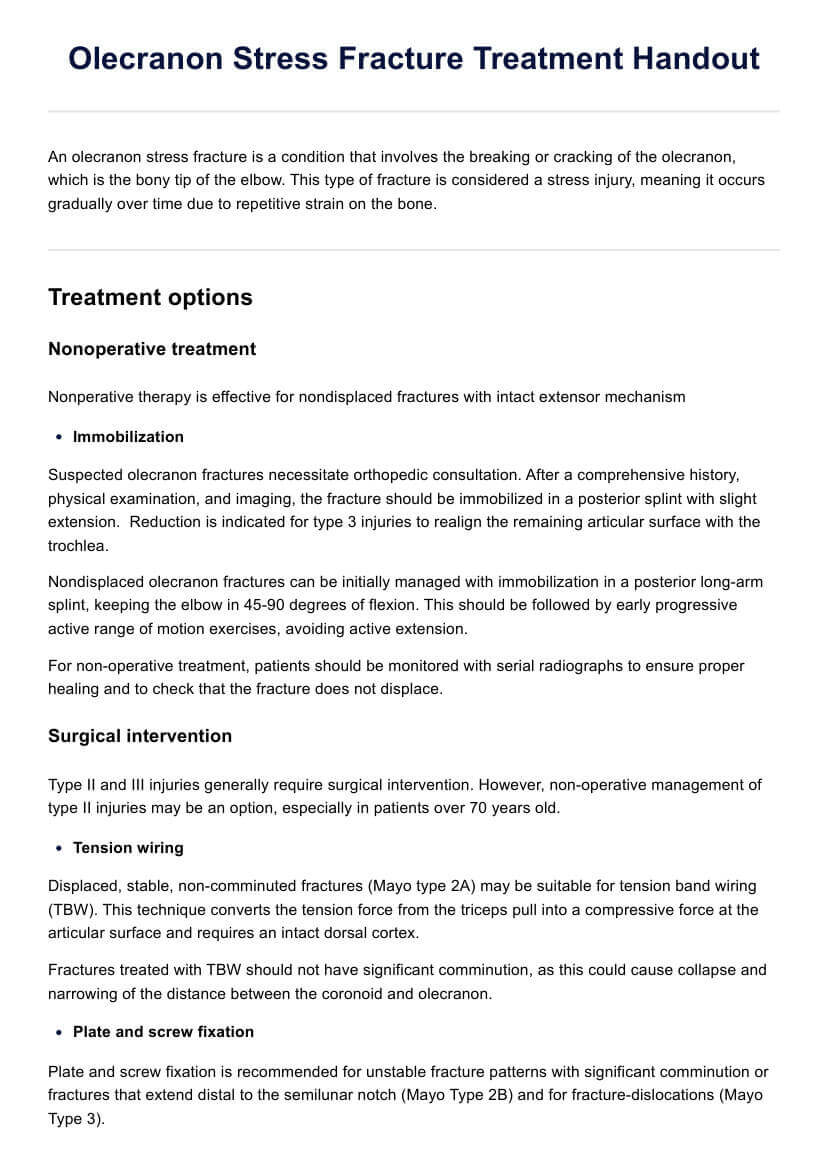Diagnosis involves a clinical examination and imaging studies such as X-rays or MRI scans to assess the severity and displacement of the fracture.

Olecranon Stress Fracture Treatment Handout
Learn effective management strategies for olecranon stress fractures with our comprehensive treatment handout, covering nonoperative and surgical options.
Use Template
Olecranon Stress Fracture Treatment Handout Template
Commonly asked questions
Nonoperative treatment includes rest, activity modification, immobilization with a sling or splint, pain management, and physical therapy to regain strength and mobility.
Surgery is recommended for displaced fractures, unstable fractures, or when nonoperative treatments fail to promote healing effectively.
EHR and practice management software
Get started for free
*No credit card required
Free
$0/usd
Unlimited clients
Telehealth
1GB of storage
Client portal text
Automated billing and online payments











